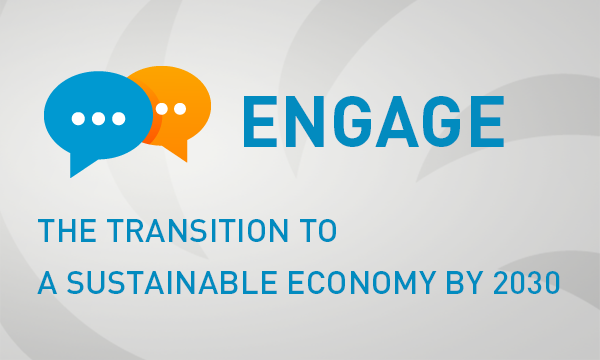This post is part of Masdar's Engage Blogging Contest for Abu Dhabi Sustainability Week 2016. Vote for my entry here.
From putting a man on the moon to civilian use of GPS, scientific innovation has often been the result of public-private partnerships in which the government sponsors basic research and private companies continue development and commercialize the innovation. Governments can adopt policies to make this process more efficient by incentivizing companies to innovate and help solve the world’s biggest challenges today, including the transition to a sustainable and clean energy economy.
Successful government innovation programs have often involved two things: research and incentive. The government needs to provide funding and facilities for basic scientific research that companies do not have the resources to undertake. Take for example the development of first mass-produced plug-in hybrid electric car in the United States, the Chevy Volt. Government-sponsored research at Argonne National Laboratory created the technology for the battery that powers the car in electric mode. Chevrolet, which did not have the resources and facilities to do this kind of research, then commercialized the batteries for use in the cars.
Private companies can also get started earlier in the process by utilizing existing government or university facilities and funding for research. For example, Masdar City in Abu Dhabi creates a community and provides facilities for research in sustainable technology. With Siemens regional headquarters onsite and other companies taking part, Masdar City provides for an innovation hub that fosters public-private partnerships.
More than making basic research and facilities available to companies, the government can also incentivize private innovation with support and funding. A recent and ongoing example of this is the US Department of Energy investment in innovative small modular reactors for clean and sustainable energy production. Through a five-year cost-share agreement, the government invests up to half of the total project cost, with the project’s industry partners matching this investment by at least one-to-one. The Department of Energy also provides assistance for engineering and design certification with the regulator. Government support is essential for both established companies and start-ups in developing such a complex technology with heavy regulation.
Governments can develop policies to streamline public-private partnership and enable the private sector to develop the goods and services necessary for a global transition to a sustainable economy. Governments should fund and provide access to scientific research and facilities and incentivize companies to innovate with support and investment, as showed in the examples above.
In addition, the type of government support—research, facilities, funding, etc.—needs to be tailored to different technology sectors and economies. Advanced clean energy systems in developing economies may require a more hands-on government approach while energy efficiency could involve simple government grants to develop innovative products in this area.
There is not one specific approach to fostering public-private partnerships but many pathways for the government to provide support and incentives for innovation in sustainable technology. The government should be an enabler (through effective support), rather than a disabler (through stricter regulations), in order to see the kind of large-scale transition that we need to achieve a sustainable economy.



 RSS Feed
RSS Feed

